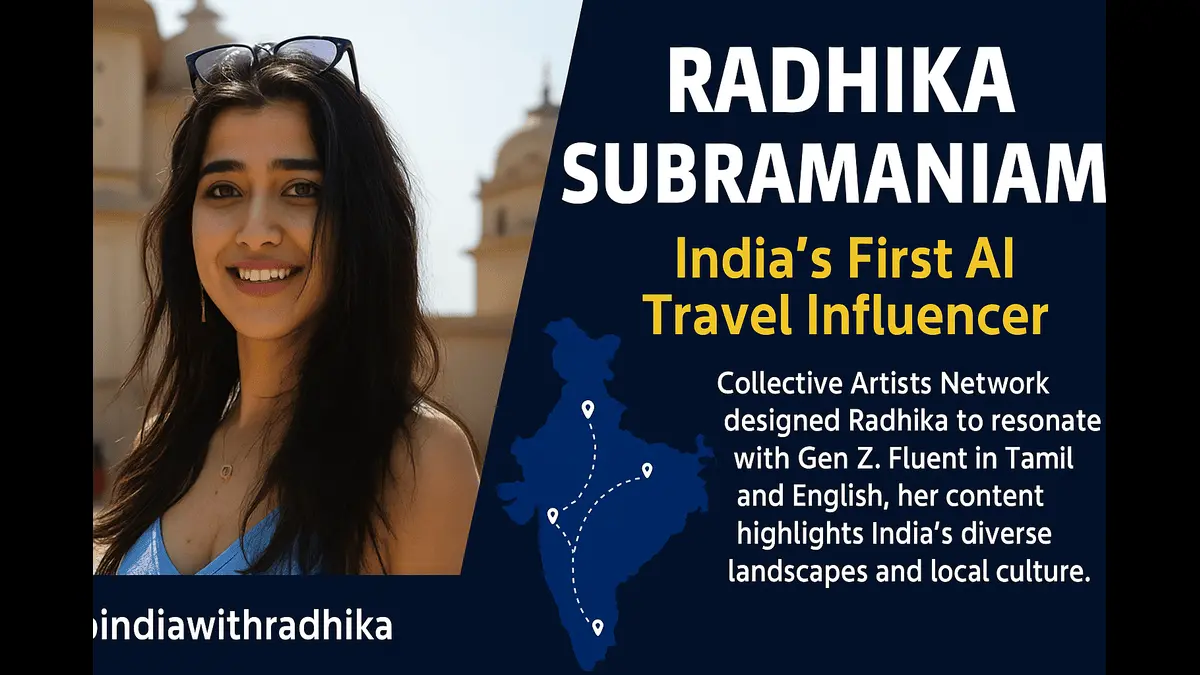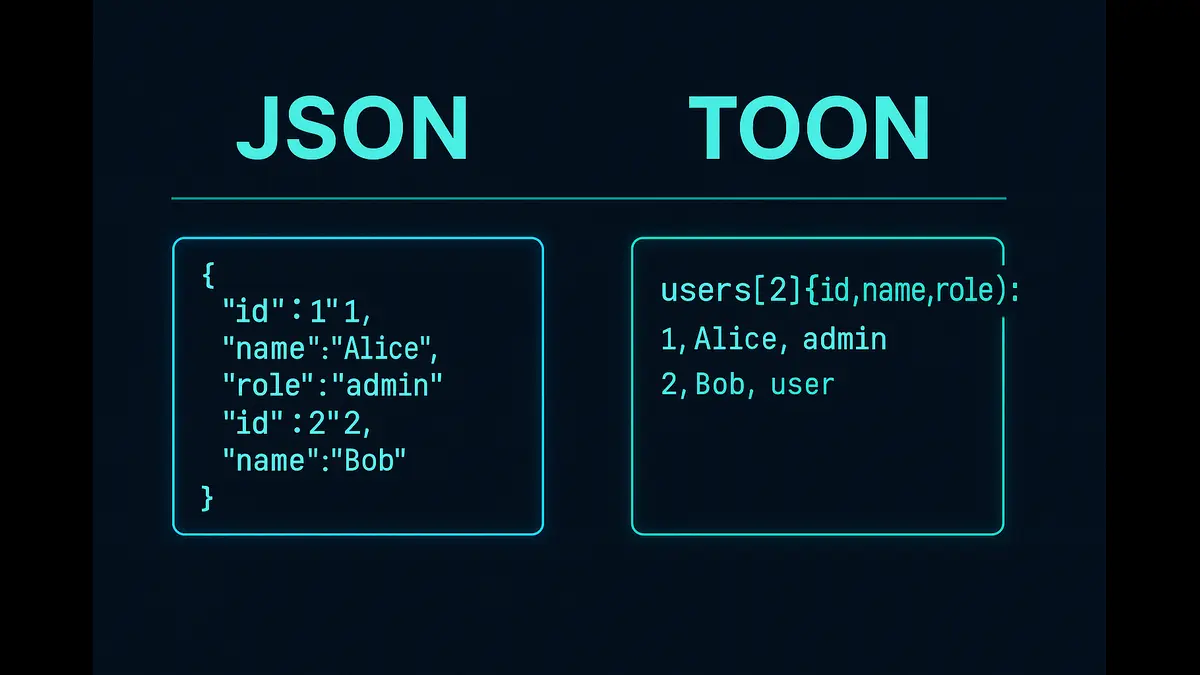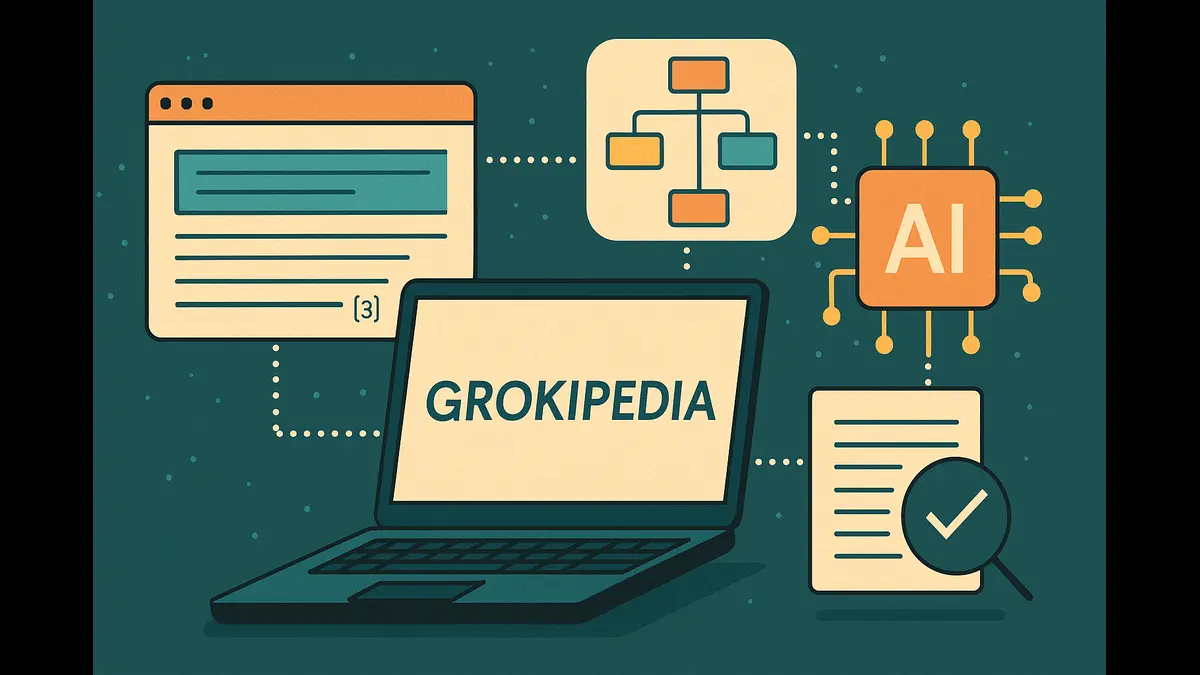
Radhika Subramaniam, India’s first AI travel influencer, launched in June 2025 by Collective Artists Network, shares Tamil-English travel stories on Instagram (@indiawithradhika). With 1,000–2,000 followers, she targets Gen Z.
In a groundbreaking move for India’s digital landscape, Collective Artists Network introduced Radhika Subramaniam, the country’s first AI-powered travel influencer, in early June 2025. Designed to resonate with Gen Z, Radhika is a virtual solo traveler who speaks both Tamil and English, sharing culturally rich stories about India’s diverse landscapes, local legends, hidden cafes, and small-town festivals. Her Instagram profile @indiawithradhika had garnered more than 2,000 followers by June 2025, reflecting her growing appeal among young audiences.
Radhika’s backstory is crafted to be relatable: a young woman who left a secure corporate job in Bengaluru to explore India’s heartlands. This narrative, combined with her bilingual capabilities, allows her to connect with diverse audiences, particularly younger ones drawn to authentic, culture-driven content. Vijay Subramaniam, Founder and Group CEO of Collective Artists Network, describes her as “thoughtful, independent, and interested in the world around her,” emphasizing her ability to tell stories that feel personal and emotionally resonant. Sudeep Subhash, Chief Revenue Officer at Collective Artists Network, adds, “There’s a warmth to Radhika that’s hard to fake. She’s not just spitting out trends—she actually gets the context.”
Radhika is active primarily on Instagram, where she curates experiences across India, from offbeat destinations to street-side discoveries. Her bio describes her as an “AI-Traveller, Explorer, Wanderluster,” and her posts focus on immersive travel narratives that highlight India’s cultural tapestry. There’s no confirmed presence on YouTube as of June 2025, but her Instagram activity suggests a strong focus on visual storytelling tailored to Gen Z’s preferences.
The Creators Behind Radhika Subramaniam
Collective Artists Network, a leading Indian media and talent management company, created Radhika using advanced AI tools like generative design, machine learning, and natural language processing. This technology enables her to craft narratives that feel human while adapting to real-time trends and audience needs. The company, which also manages high-profile celebrities like Deepika Padukone and Ranveer Singh, has been at the forefront of blending technology with storytelling. Radhika follows their earlier AI influencer, Kavya Mehra, a virtual mom influencer launched in December 2024 to target millennials with motherhood-related content. Unlike Kavya’s luxury and lifestyle focus, Radhika’s grounded, culture-centric approach sets her apart as a Gen Z icon.
Why AI Influencers Matter to Brands
AI influencers like Radhika are transforming brand marketing with their unique advantages. They offer always-on content creation, producing high-quality posts around the clock without the constraints of human schedules or fatigue. This ensures brands maintain a consistent online presence. Additionally, AI influencers avoid scandals, eliminating risks of personal controversies that can tarnish a brand’s image. Their brand-safe language is carefully curated to align with corporate values, ensuring messaging stays on point. Perhaps most crucially, AI influencers enable localization at scale, effortlessly adapting content to regional languages and cultural nuances, like Radhika’s Tamil-English bilingualism, to connect with diverse audiences. These factors make AI influencers a powerful tool for brands seeking efficiency, reliability, and global reach.
India’s Growing AI Influencer Ecosystem
India’s influencer marketing landscape is rapidly evolving, with an estimated 3.5–4 million influencers and a growing emphasis on AI-driven personas. Collective Artists Network’s acquisition of galleri5, an AI-powered influencer marketing platform, underscores the industry’s shift toward technology. AI influencers like Radhika and Kavya offer brands unparalleled advantages: they’re customizable, always available, and free from human limitations like fatigue or scandals. According to a 2024 EY report, 75% of brands are incorporating influencer marketing into their strategies, with many allocating significant budgets to virtual influencers for their consistency and scalability.
However, India’s adoption of AI influencers also raises concerns. Transparency is critical, as followers must know they’re engaging with a virtual entity. There’s also the risk of data collection for hyper-targeted ads, which could raise privacy issues. Despite these challenges, the influencer market in India is projected to grow, with 77% of influencers reporting income growth in the past two years and 86% expecting further increases.
Global Virtual Influencer Trends
Radhika is not alone in the global AI influencer space. Internationally, virtual influencers have gained traction for their versatility and brand-friendly attributes. For instance, Lil Miquela, a Brazilian-American virtual model created in 2018, boasts over 3 million Instagram followers and has collaborated with brands like Calvin Klein and Prada. She’s also ventured into music, performing at virtual festivals like Lollapalooza.
Another example is Oh Rozy, a Korean virtual influencer launched in 2020, known for her 3D-synthesized face and over 100 sponsorship deals, including a life insurance commercial that garnered 9 million views. Milla Sofia, a Finnish AI influencer, has 203,000 Instagram followers and is active on YouTube, promoting phone accessories and sharing travel-inspired content. These global examples highlight how AI influencers can transcend geographical and linguistic barriers, offering brands scalable, controversy-free ambassadors.
What the Future Holds for AI Creators In India
The future of AI influencers in India looks promising, driven by increasing digitization and a tech-savvy Gen Z audience. As Vijay Subramaniam notes, the lines between traditional entertainment and digital platforms are blurring, creating a unified ecosystem where AI-driven storytelling thrives. Radhika’s success could pave the way for more niche AI influencers, from food bloggers to fitness gurus, each tailored to specific audiences. However, ethical considerations—such as preventing misinformation and ensuring transparency—will be crucial. Strengthening privacy regulations and clearly disclosing AI influencers’ virtual nature will build trust with audiences.
Radhika Subramaniam represents a bold step in India’s creator economy, blending cultural authenticity with cutting-edge technology. As brands and audiences embrace AI influencers, India is poised to become a hub for innovative, scalable storytelling, with Radhika leading the charge. Her journey, alongside global counterparts, signals a future where virtual and human influencers coexist, reshaping how we connect with stories and brands.
Also read: AI Powered Social Media Personas: A Foundational Blueprint
AI-Powered Personas: The Rise of Synthetic Social Media and Its Global Impact
Discover more from Poniak Times
Subscribe to get the latest posts sent to your email.








